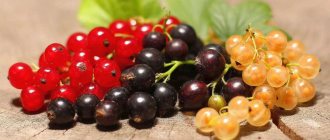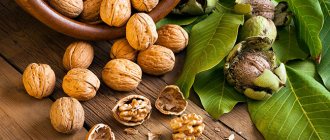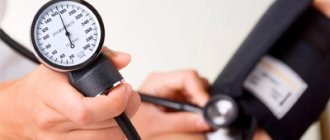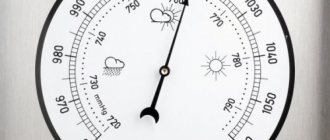Why is there a shortage?
The most common cause is blood loss, for example due to injury or bowel disease, or due to excessive menstrual bleeding.
“Iron deficiency underlies more than half of anemia,”
says Ph.D.
cardiologist and nutritionist, GMS Clinic Natalya Polenova. “The main causes of iron deficiency: unbalanced diet, malabsorption, cyclic blood loss in women of reproductive age, donation, pregnancy, lactation, rapid growth during puberty.”
The second reason is poor absorption of iron. This can occur with medications, chronic bowel disease, inflammation, or genetic disorders.
A hematologist at the Federal State Budgetary Institution “National Medical Research Center of Hematology” of the Ministry of Health of Russia clarifies that iron deficiency conditions occur in many diseases with malabsorption, ranging from serious cancer to helminthiasis and the presence of Helicobacter pylori bacteria, which absorb iron.
How to find out if you have anemia
Typically, in the initial stages, iron deficiency states do not appear externally. But minor symptoms may appear, which are usually ignored and lead to further development of the disease.
“With a lack of iron, the formation of the protein that carries oxygen to cells—hemoglobin—is disrupted. When his performance decreases slightly, fatigue increases, shortness of breath, dizziness and fainting occur with minor exertion,” says the hematologist.
You can find out about a lack of iron in the body only through a blood test. It makes sense to take it if all the symptoms appear for no apparent reason.
The list of tests must include a test for hemoglobin level, hematocrit, mean erythrocyte volume (MCV) and mean erythrocyte hemoglobin content (MCH).
Natalya Polenova notes that a single general blood test assessing hemoglobin levels is often not enough, especially for women or people with chronic heart failure.
Only a doctor can, after studying the tests, identify the cause of the deficiency and prescribe treatment.
B vitamins: side effects
Before the formula was figured out, vitamins were called letters of the Latin alphabet as they were discovered: A, B, C, D, and so on. Now they have rational names based on their chemical structure. Vitamin A is retinol, vitamin K is phylloquinone, vitamin B2 is riboflavin, vitamin PP is nicotinic acid, etc. But in the old fashioned way we call them “A”, “Be” and “Tse”... How could it be otherwise, because vitamins are our old friends! But how well do we know them?
They say that every doctor has his own “favorite” drugs. This is true. The doctor knows some medications better, prescribes them first and sometimes takes them himself. And each doctor has his own favorite vitamins, which he will most likely recommend to you.
But then we come to the pharmacy - and our eyes widen. They offer a sea of vitamins in beautiful jars with bright labels! Entire shelves are occupied by them. But the doctor insisted on one single drug... Isn’t it better to buy THIS and THAT? Maybe the doctor hasn’t looked at the reference books for a long time? And the hand reaches out to the magic pills that catch your fancy.
But, wait, let's remember what the doctor advised. Do you know which vitamins doctors love especially dearly? Of course, B vitamins.
Why are they so popular with doctors?
The thing is that great hopes were placed on them in the eighties of the last century: it was believed that B vitamins reduce the level of homocysteine in the blood - an amino acid, the high level of which is directly related to heart and vascular diseases. Many studies have been conducted in different countries, and as a result, the effectiveness of these vitamins was considered ambiguous: “50 to 50.” Indeed, when patients take more effective medications, “vitamins” play only a supporting role. But doctors continue to prescribe them for various cerebrovascular pathologies (diseases of the blood vessels of the brain). Additional help for the body is not a hindrance, right?
Yes, modern, effective and inaccessible to most patients due to their high price, drugs act much faster. And of course, “vitamin therapy” is not so effective. But almost all drugs have a “dose-dependent” (the higher the dosage, the better) and a “chrono-dependent” (the longer the drug is taken, the longer the positive dynamics persist) effect.
At the same time, the undeniable advantage of vitamins is the price. When prescribing a drug, a doctor can be sure that the medicine will be taken as long as needed and will not empty the patient’s wallet. Many doctors, when prescribing group B, focus on this.
Get to know everyone by sight
You know the basic B vitamins for sure. These are the well-known B1, B6 and B12:
- B1
– (thiamine) actively participates in metabolism, restores peripheral nerve endings that regulate the functioning of the liver and heart. - B6
– (pyridoxine) strengthens the immune system, has a beneficial effect on skin diseases, and restores the nervous system. According to some data, 80 mg of vitamin B6 per day reduces the risk of myocardial infarction by 32%. - B12
– (cyanocobalamin) has a beneficial effect on the function of the liver and nervous system, and is involved in the restoration of metabolism. Vitamin B12 is effective in treating chronic fatigue syndrome in 50–80% of people.
But their less famous brothers deserve attention too.
- B2
– (riboflavin) participates in metabolism, strengthens the respiratory system, improves vision, cures skin diseases, and has a beneficial effect on the functioning of the nervous system. - B3
– (nicotinic acid) cures pellagra, improves water-salt metabolism, improves metabolism in the cells of the nervous tissue. - B9
- (folic acid, folacin, vitamin Bc) is extremely important for the development of the brain and nervous system of the fetus, it is also needed for the development of a breastfed child, and for adults, primarily for the normal functioning of the nervous system.
Do you get the general idea? Right! B vitamins are essential for diseases of the nervous system. Which of us has “nerves” in order? Now my head hurts, now my irritability has increased, now my back is “shot”, now I have problems with my memory...
B vitamins are called “neurotropic” because of their effect on the function of nerve cells. Some studies have shown high activity of this group in terms of pain relief in chronic pain syndromes and increasing the pain threshold in acute pain. Currently, more than a hundred studies have been published showing clinical improvement with the use of B vitamins in patients with pain syndromes.
When do B vitamins help?
Vitamins of this group are especially often prescribed to patients with back pain. Once you see a doctor with the complaint of “your back is stuck,” “shot in the air,” or “arm/leg is numb,” a prescription with the treasured trinity (B1+B6+B12) will be in your hands. Why? Because it has been repeatedly proven that it is these “magic” vitamins that influence nerve cells coming from sensitive receptors to the brain, as if “inhibiting” pain impulses.
If the nerve fiber itself, consisting of hundreds and thousands of processes of neurons (nerve cells), is damaged, then their successful “restoration” requires the same vitamins that work, laying proteins like bricks to recreate the fiber shell.
However, many neurologists remain skeptical about their therapeutic potential, believing that in many cases there is a placebo effect. The fact is that no one has ever been able to achieve a 100% effect in treatment when prescribing vitamins alone. Therefore, if you have back pain, consult a doctor, he will select the right combination of medications for you, including the B-complex.
In 2000 and 2002, the American Psychiatric Association published research in the American Journal of Psychiatry showing the effect of vitamin B12 deficiency on the occurrence of clinical depression in elderly patients. For many of them, antidepressants were not indicated, so vitamin complexes paired with diet and exercise gave good results. Given these data, many doctors began to actively prescribe B-complexes for the treatment of depression and achieve results.
Other studies have shown that pregnant women consuming foods rich in folic acid or taking adequate doses of folic acid and vitamin B12 significantly reduce the risk of developing neural tube defects. This is also the “gold standard” of pregnancy management throughout the world.
B1 deficiency also plays a big role in the development of alcoholic polyneuropathy, which in Russia is one of the most common forms of generalized damage to peripheral nerves.
The only questionable purpose of this group is still asthenic conditions, such as the notorious “chronic fatigue syndrome”. Too many diseases can be hidden under the guise of this seemingly innocent diagnosis. The man is tired... stress, lack of sleep and irregular nutrition have taken their toll. Take some vitamins and everything will go away? And they drink! Handfuls and kilograms!
...And we face the risk of overdose
When consuming excessive doses (three or more times the recommended daily intake) of B vitamins, intoxication develops. Hypervitaminosis of vitamins B1, B2 and B6 can cause fatty liver. Among the elements of group B, the most toxic are B6 and B12. And allergic reactions are observed mainly with their excess, as well as with an overdose of vitamins B1 and B2.
Thus, an excess of vitamin B1 causes symptoms in the form of allergic reactions and spasmodic headaches. Blood pressure decreases, fever, weakness, nausea appear, vomiting may occur, chills are replaced by a feeling of heat, tinnitus bothers you, severe sweating and dizziness appear.
With prolonged use of vitamin B6 in excess dosages, anemia develops, coordination of movements is impaired and numbness of the limbs appears.
Excess vitamin B12 leads to heart failure, pulmonary edema, vascular thrombosis due to increased blood clotting and anaphylactic shock. The heartbeat quickens, pain appears in the heart area, nervous disorders intensify, and allergic rashes appear on the skin in the form of hives.
As you can see, caution is needed even with such seemingly harmless drugs as vitamins. Therefore, it is best to consult a doctor for advice. And he will definitely tell you everything he knows about his “favorite” vitamins.
Valentina Saratovskaya
Photo thinkstockphotos.com
Products by topic: (vitamins)
Who should take iron and how?
No one without a doctor's approval. Vitamins and dietary supplements with extra iron can be dangerous. For example, in people with impaired iron metabolism, excess iron in the diet leads to the development of liver cirrhosis, diabetes mellitus and cardiomyopathies.
“Iron overload due to thoughtless use of drugs leads to very dangerous consequences. In practice, several times we encountered patients with iron overload. Their liver is more like a metal basin,” says the hematologist.
If you have iron deficiency anemia, a simple diet or dietary supplements will not be enough. Such serious conditions are treated with iron injections and medications.
If the doctor sees a slight iron deficiency in the tests, then it is best to regulate it by adding foods containing iron. In food it can be heme - easily digestible and non-heme - difficult to digest. Heme iron is found in meat, poultry, fish and seafood. It is easily digestible and does not depend on other nutritional factors.
“The main sources of dietary iron are red meat and organ meats, especially liver,”
says Natalya Polenova.
— They contain a lot of iron, and it is well absorbed.
Next on the list are fish and seafood, especially sardines, tuna, shrimp, mussels and clams. In addition to the fish itself, quite a lot of iron is contained in its caviar.” Non-heme iron is found mainly in plant foods. But in order for the body to absorb it, it needs the help of organic acids, primarily ascorbic acid.
Polenova clarifies that among plant foods, the most iron is found in beets, asparagus, cauliflower and white cabbage, and spinach. But for successful absorption you will need, for example, citrus juices. When compiling a diet, you need to take into account that 10–15% of iron is absorbed from food.
The effect of nutrition on blood pressure
Many factors play a role in the development of hypertension. Not least of all is food. Blood pressure is affected not only by the composition of the diet, but also by a person’s eating habits, including how often they eat, how large the portions are, and how much fluid they drink.
A healthy, balanced diet is one of the conditions for maintaining a healthy cardiovascular system, normal heart function and optimal blood pressure levels.
There is a list of foods that increase blood pressure:
- Salt, additives, seasonings containing sodium: retain fluid, increasing its volume in the body, increasing the volume of circulating blood. Salt intake should not be too high even with hypotension. WHO recommends consuming no more than 5 g of salt daily (1 teaspoon).
- Products containing caffeine: coffee, green tea, cocoa. For example, strong sweet tea tones up and increases heart rate.
- High-calorie dishes. Baked goods, meat products, cheese, sweets, and high-fat dairy products provoke an increase in blood sugar, which causes blood pressure to rise. It is important for people with hypotension to eat foods that are nutritious enough, but they need to be careful that they are not excessively high in calories or contain too many carbohydrates or saturated fats.
- A large amount of water, watermelons, melons
Based on the mechanisms of increased blood pressure, nutritional principles have been developed:
The diet is significantly limited: table salt, nitrogenous extractives, animal fats and easily absorbed carbohydrates.
The diet should be enriched with potassium and magnesium salts, vitamins C, P and group B, vegetable oils, lipotropic substances (methionine, choline), dietary fiber (in bran, wholemeal bread, fruits, vegetables), and seafood rich in various minerals. substances and microelements, including organic iodine, B vitamins.
All food is prepared without salt, but in consultation with the doctor, it is allowed to add no more than 3-5 g of table salt to dishes.
To improve the taste of unsalted food, you can eat cranberries, lemon, prunes, jam, honey, sugar, vinegar, parsley, dill, cinnamon, citric acid, candied fruits, vegetable and fruit juices.
You can add yogurt, cumin, and anise to salt-free dough. When compiling a diet, you should also take into account the table salt content in the foods used for food.
Persons with arterial hypertension and excess body weight need to reduce the caloric content of their daily diet due to bread, sugar, cereal dishes, pasta and potatoes.
The total amount of free liquid (including first courses) is up to 1.5 liters. Main courses are prepared mainly boiled or baked or lightly fried after boiling.
Products useful for preventing arterial hypertension:
- raw vegetables, fruits and berries;
- foods rich in potassium salts (dried apricots, raisins, prunes, peaches, bananas, apricots, pineapples, rose hips, potatoes, cabbage, eggplants);
- foods rich in magnesium salts (soybeans, oatmeal, buckwheat, millet cereals; walnuts, almonds; bran);
- seafood containing organic iodine (seaweed, squid, scallop, shrimp, mussels, etc.),
- products containing a small amount of table salt (rice, oatmeal and semolina, cauliflower and white cabbage, carrots, beets, potatoes, pike perch, carp, pike, perch, beef, rabbit),
- foods containing large amounts of vitamin C (rose hips, black currants, strawberries, gooseberries, oranges, apples, cabbage, sweet red peppers, parsley, dill, green onions, etc.),
- products containing large amounts of B vitamins (bran, wholemeal rye and wheat bread, brewer's and baker's yeast, seafood, soy flour).
Important to remember
- The causes of iron deficiency are blood loss, malabsorption, unbalanced diet, pregnancy, and helminthiasis.
- To identify a deficiency, you need to take a blood test for hemoglobin level, hematocrit, mean erythrocyte volume (MCV) and mean erythrocyte hemoglobin content (MCH).
- If there is no deficiency, then you should not take iron supplements. It may be dangerous.
- It is best to obtain iron from animal foods, in which it is in heme form.
- If you do not eat animal foods, you will need foods high in vitamin C to absorb plant non-heme iron.











